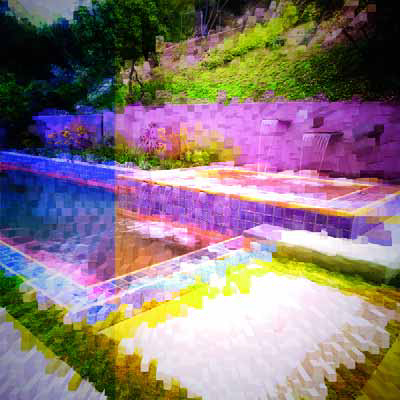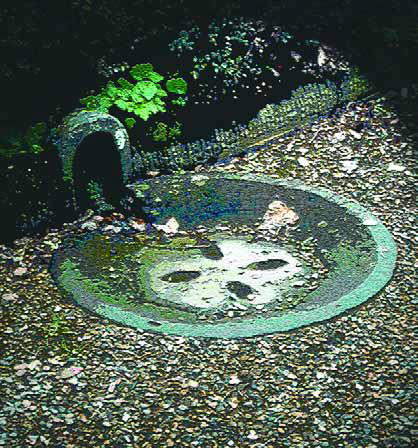aesthetics
Bridges have been important to humanity for thousands of years. They've provided avenues of travel between disconnected spaces and have, as a result, been critical to commerce, settlement, warfare, travel and even poetry and literature. To this day, they are iconic in certain cities or regions (think Paris or New York), and there has always been a distinctly romantic air that accompanies their obvious utility. My relationship with bridges in general (and with wooden bridges in particular) began during my childhood near Nebraska's Niobrara River. The big, load-bearing structures crafted to span that river in the late-19th and early-20th centuries absolutely fascinated me. I'd spend hours climbing on those old structures and was amazed by the way they creaked as their tension and compression members supported truly formidable weights. At the same time, I came to value the presence of
Bridges have been important to humanity for thousands of years. They've provided avenues of travel between disconnected spaces and have, as a result, been critical to commerce, settlement, warfare, travel and even poetry and literature. To this day, they are iconic in certain cities or regions (think Paris or New York), and there has always been a distinctly romantic air that accompanies their obvious utility. My relationship with bridges in general (and with wooden bridges in particular) began during my childhood near Nebraska's Niobrara River. The big, load-bearing structures crafted to span that river in the late-19th and early-20th centuries absolutely fascinated me. I'd spend hours climbing on those old structures and was amazed by the way they creaked as their tension and compression members supported truly formidable weights. At the same time, I came to value the presence of
Fifteen years ago, aquatic play attractions were found mainly in commercial waterparks in the form of large, multi-level, themed structures. Some smaller elements were found in the shallow ends of swimming pools, but they were generally limited to a few play apparatuses such as water umbrellas. Much has changed in recent years, and aquatic play systems are now featured in a greater variety of settings including city parks, recreation centers, resorts and a range of other recreational spaces. This trend did not burst forth overnight: For more than ten years, our firm and others have been helping things along by focusing attention on the value of concepts related to zero-depth aquatic play. We at Vortex Aquatic Structures in Montreal, for example, have designed our "Splashpads" to bring the joy and recreational value of aquatic play to almost any space. Among our objectives is bringing a measure of the commercial waterpark experience to places such as neighborhood parks, housing developments, campgrounds and other facilities, thereby allowing everyone within a community to experience
Few things are as important to the aesthetic impression made by swimming pools, spas and other watershapes as the colors you select to use in it and around them. Take tile as an example. Whether it's just a waterline detail, a complete interior finish or some elaborate mosaic pattern, it serves to draw the eye into a design. If the color and material selections work, the scene can become extraordinarily elegant and beautiful. If they don't, you can have a major eyesore on your hands. The amazing thing to me is how few watershapers ever really consider the importance
When it comes to the old buildings that people most want to preserve, the good-looking ones always top the list. These structures are cherished because they make strong aesthetic statements and are often associated with a given period of history, a particular architect or a specific design movement. As an architect working to create public and institutional aquatic complexes, I try to think of my designs in those enduring terms. In other words, I want to develop watershapes that make strong aesthetic statements and therefore have a chance to be cherished and therefore stand a better chance of being preserved, well used and enjoyed for generations to come. I do so because a facility that is both functional and beautiful will, I think, inevitably be of greater value to its community than one that is simply functional. Ugly buildings do the exact same job as beautiful ones in sheltering human activities, but which are more likely to generate excitement, enjoyment and value for the long haul? The answer, I think, is obvious. As a result, I see aquatic facilities as places that should be
Some people seem to believe that designing is all about reinventing the wheel every time they go to work on a new project or need to create a new detail of some kind. Truth is, however, that most great design ideas and details are derivative of things that have been done before. This is why I'm such a strong advocate for education - especially the sort that involves venturing out into the world and seeing things with your own eyes. You can see pictures of things in books and watch slide shows in classrooms, and that's extremely valuable for the way it opens your eyes to
Designing structures to surround indoor pools offers the watershaper the fundamental challenge of creating an interior space that needs all the functional characteristics of an exterior one. That's so mainly because ordinary residential structures aren't made to enclose anything that even remotely approaches the moisture levels encountered when an indoor pool is surrounded and separated from the open air. This leads to consideration of the air-handing, temperature-control and humidity-related issues covered in another article on this subject (click here), but it almost always leads as well to a need to
The people who once inhabited modern-day Mexico's Yucatan peninsula were remarkably sophisticated. Their civilization was based on a deep-rooted knowledge of astronomy, mathematics, hydraulics and engineering. They quarried stone and moved it hundreds of miles on rollers, using this raw material and incorporating it into highly refined buildings, temples, roads and monumental works of art that rival those of the better-known cultures of ancient Europe, Africa and Asia. In 2001, I traveled extensively in the Yucatan to experience the region's culture and view masterworks from many centuries past. What I found was a sense of form, line and pattern in the ruins of
Vanishing-edge pools are all about changing the relationship of the water to its surroundings. They enable the water to reflect views and create visual links to the surrounding scenery in dramatic and surprising ways that simply can't be achieved with conventional designs. The same distinction is true of perimeter-overflow systems and pools with deck-level (or slot-overflow) designs, which is why I classify all three together as "water-in-transit" systems. There's a lot of diversity under that big conceptual umbrella, but these pools share





















